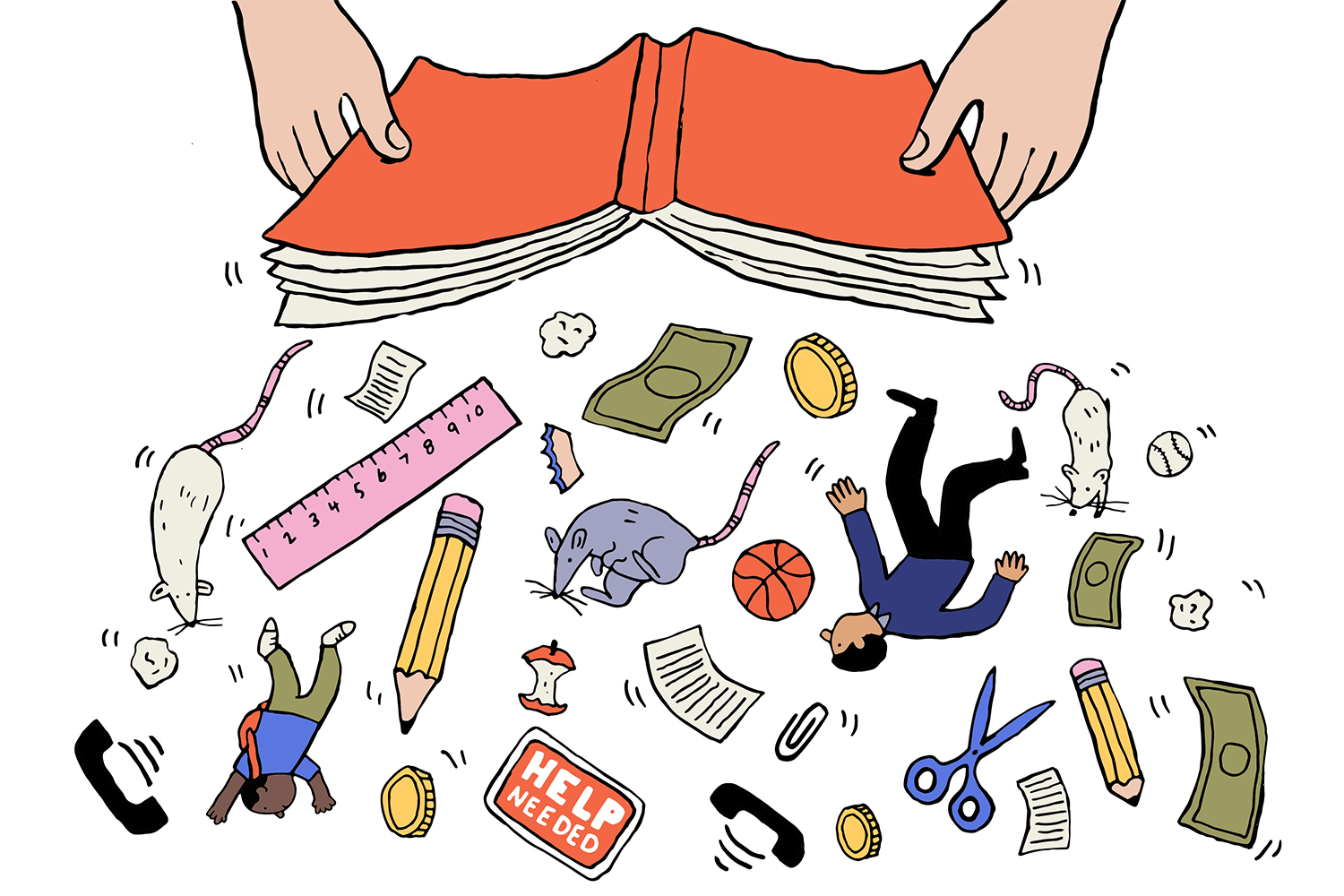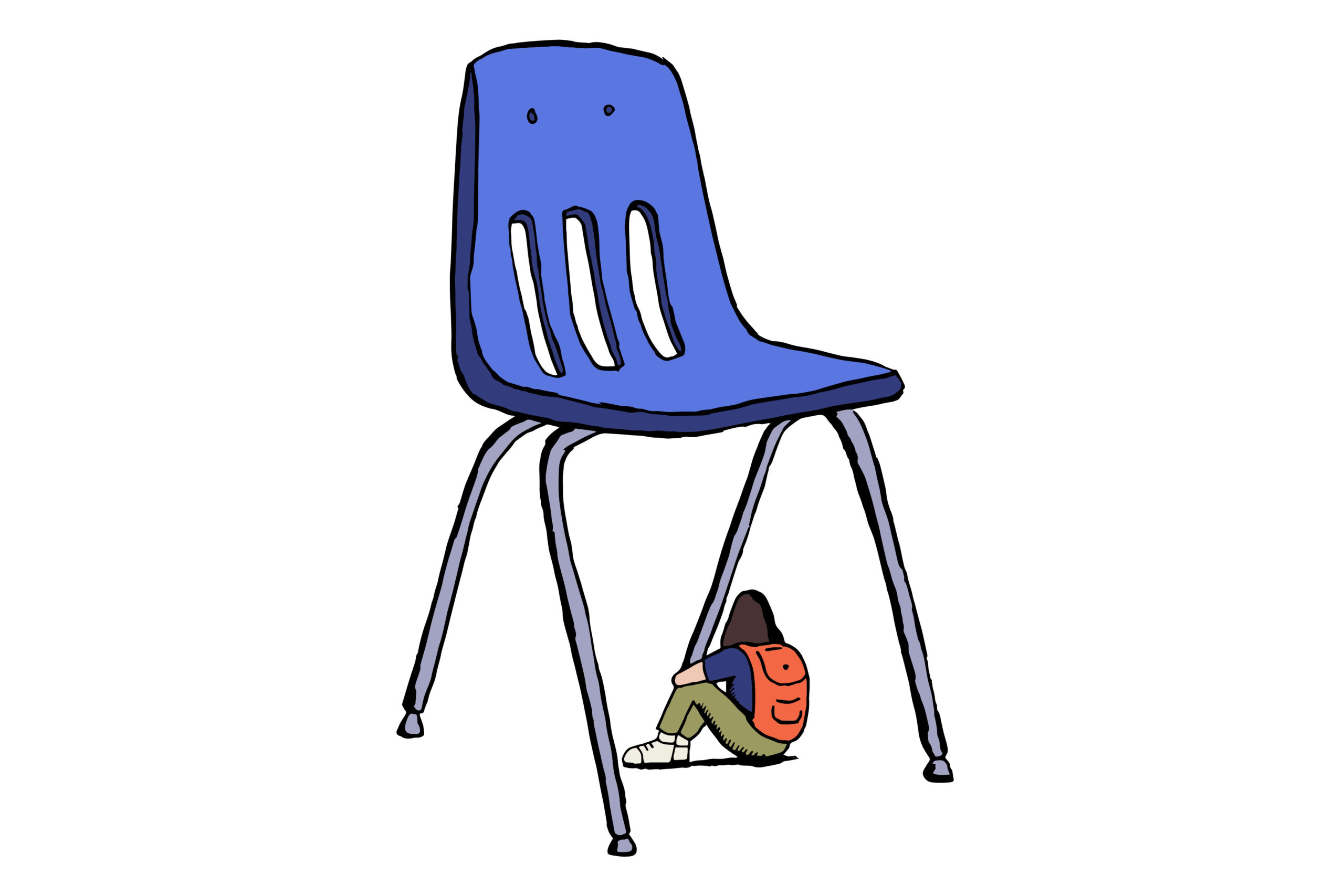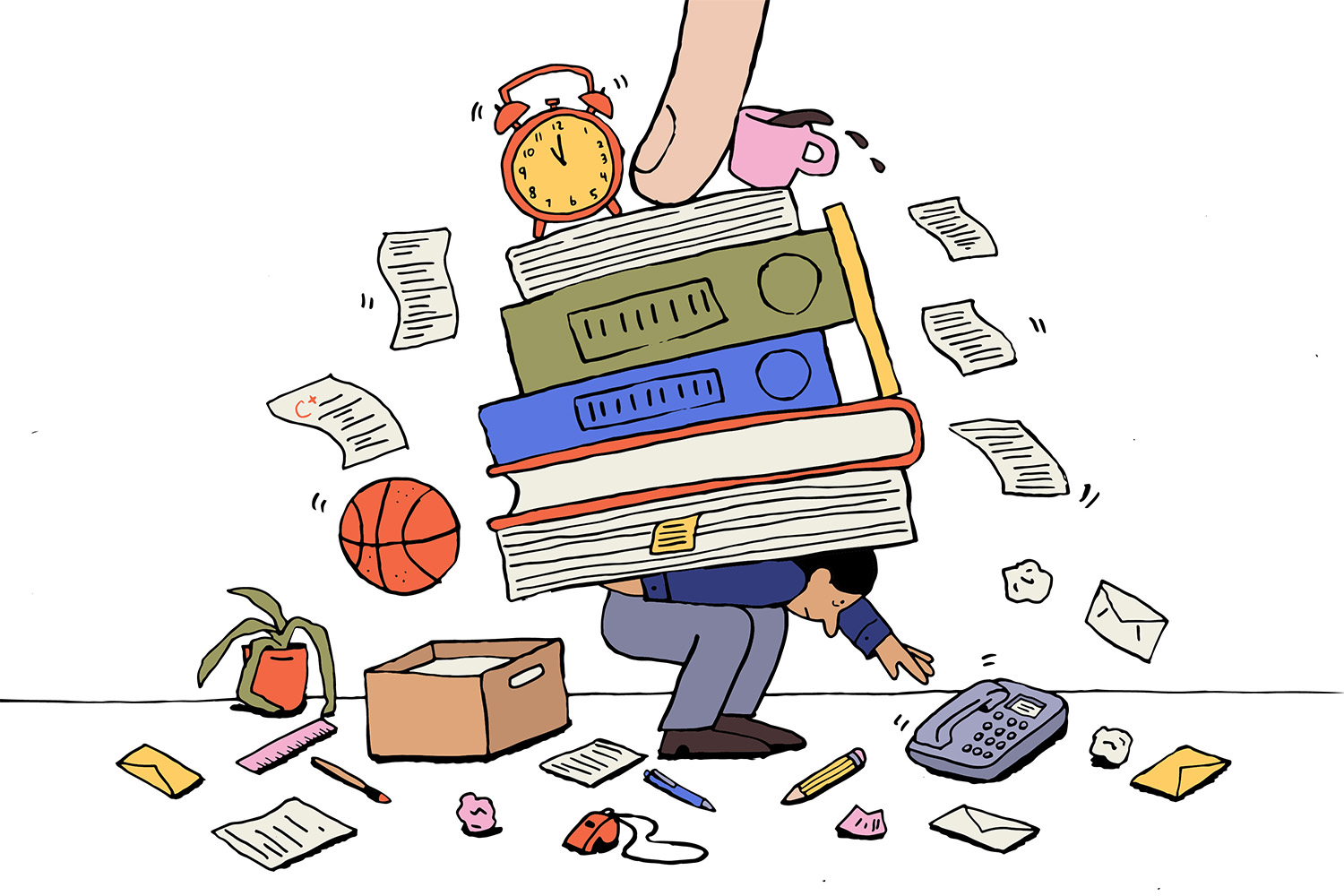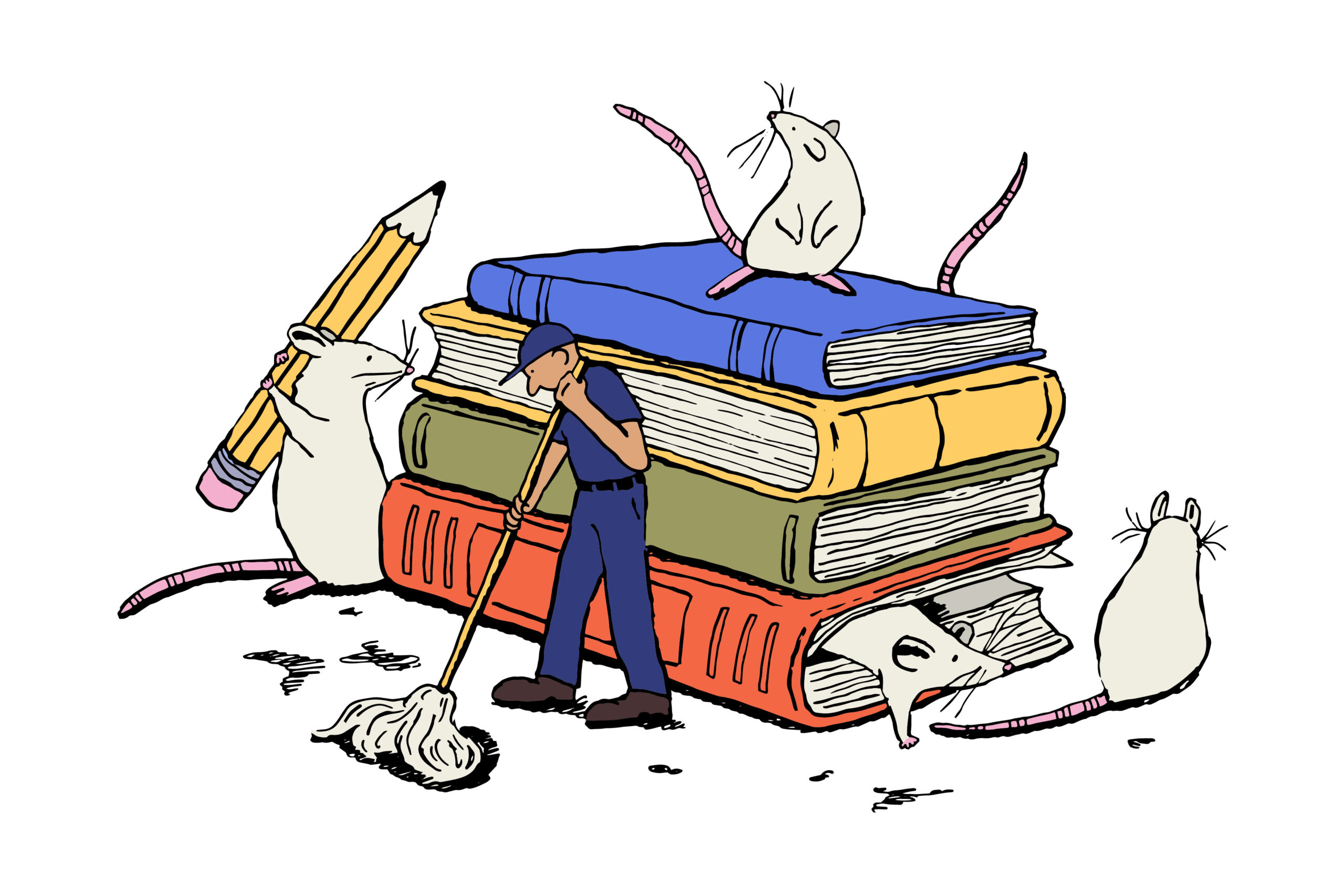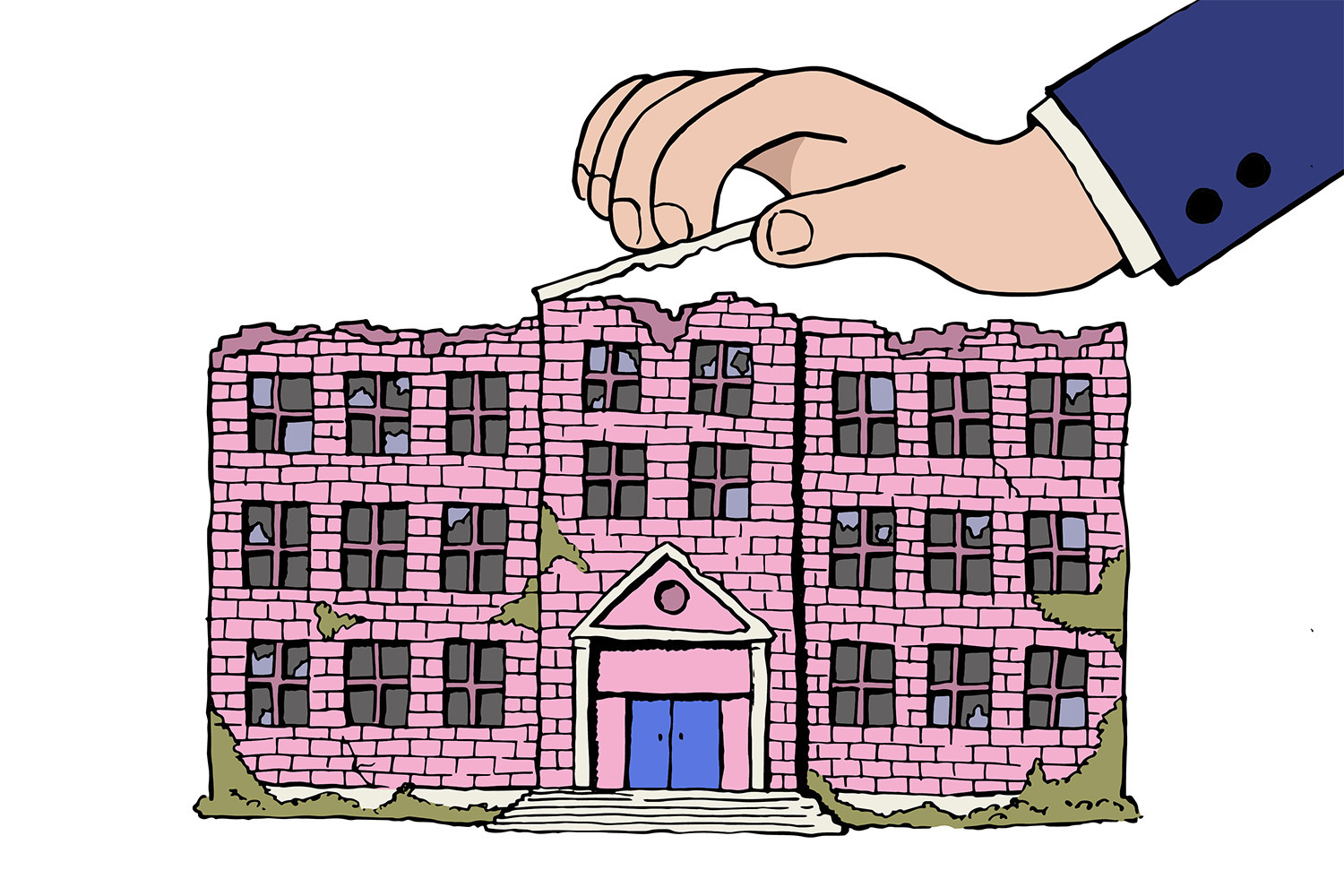
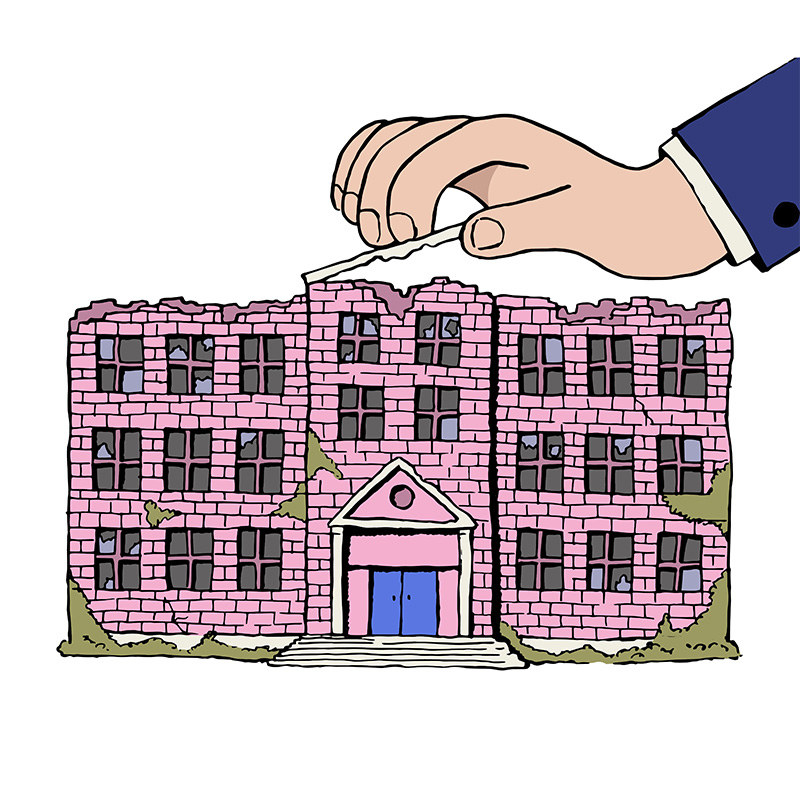
Colleen Russell-Rawlins gently folded her arms and rested them on the table in front of her as she addressed the trustees of the Toronto District School Board (TDSB) one evening this June. In one of her last finance committee meetings as the board’s director of education before retiring in November, she described what she believed public education in the city could look like.
With needed investments, the TDSB, the province’s largest school board, could rebuild after the COVID pandemic and maintain its status as a world-class public education system, she said in a calm, even voice. It could offer literacy support for students ages 4 to 18, special education to ensure all students fulfil their potential, cleaner schools, improved arts programs, sports, and business projects.
“Wouldn’t it be wonderful to, every five to seven years, have a regeneration project in each of our schools?” she mused.
There could be child and youth workers, counsellors, social workers, or learning coaches in every school that needed one, she continued. And the board could have an innovation centre that would serve as an incubator or test lab for new ideas that could revolutionize teaching and learning.
“As your primary educator, as the director of education, that’s the vision I want you to be able to realize,” she said. “It is the vision that our children, and our families, and our staff deserve.”
Instead, Russell-Rawlins presented the trustees with a different task, one she acknowledged was “seemingly impossible”—to balance the 2024-25 budget, in spite of a structural deficit which by now had become a familiar predicament.
“This task is made even more difficult because it needs to be carried out within a funding formula that for decades has shown that it was never designed to serve a board of this size or complexity,” she said.
Instead of dreaming up ways of improving schools, it was the job of those in the room to find ways to scrimp and decide which expenditures were least vital. In an effort to find funds, the trustees decided to draw on $27.5 million from money acquired through the sale of some of its properties—money that wouldn’t be available next year. In the end, they approved a budget that cut $17 million, including from central staff and school renewal projects.
The belt-tightening measures allowed the board to submit a balanced budget, as required by the Education Act. But over time, doing so has also meant starving its schools. At a board meeting just before voting on the budget, TDSB vice-chair Neethan Shan lamented that trustees have “somehow catered to the agenda of degrading the standards of public education.”
“We keep cutting [off] different parts of our limbs over years,” Shan said, addressing the board. Eventually, he said, “we are not able to recognize the schools that were there 20 years ago.”
Those cuts can be felt in every corner of public education in Toronto today. It’s not just the mice and the rat infestations, or the roofs that leak, the windows that need replacing, or the lack of air conditioning and adequate ventilation. It’s not just the shortage of staff—of teachers, principals and vice-principals, educational assistants, early childhood educators, office support workers, caretakers—or the lack of basic classroom supplies, like text books, markers, or even tissues to wipe tiny noses. It is the accumulation of all these issues that make teachers and parents despair over the current state of the public education system.
This week, as students and teachers prepare to head back to class with all the optimism that comes with the start of a new school year, they again face the challenge of trying to make do in spite of it all. Despite the Ontario government’s announcements of what it describes as historic investments in education, multiple school boards across the province are struggling with funding shortfalls that, by now, are chronic. According to the Ontario Public School Boards’ Association, per-student funding in Ontario was $13,834 for 2024-25. That’s an increase of 1.8 percent from the previous year. But when adjusted for inflation, the school board association points out that it actually amounts to a decline of $776 per student from 2018-19 levels.
The TDSB’s funding gap—that is, the difference between what it receives from the province and its actual costs—has persisted year after year. For the 2023–24 school year, the board reported a total funding gap of $201 million (a figure that’s expected to be adjusted this fall), and $221 million the year before that. To help make up for these shortfalls, prior to this latest budget, the TDSB said it had approved $64.7 million in cuts since 2019.
In interviews with The Local, parents, education workers, and advocates described an education system in which schools have fallen into disrepair and the needs of students far exceed what educators are able to provide. Provincial underfunding, they say, is contributing to a gradual erosion of public education in Ontario, to the point where the cuts are carving into bone.
“I know it’s difficult,” Shan continued in his speech to his fellow trustees. “But at some point, all of us collectively will have to push back against this.”
Hugh Mackenzie is a long-time researcher on education funding in Ontario. Since the late 1990s, he has authored numerous papers, including for the Canadian Centre for Policy Alternatives, on the subject of provincial underfunding of public education. The TDSB’s struggles over the past several months to put forth a balanced budget—holding marathon board meetings to debate how to eke out cost-savings—are old hat to him now.
For over 25 years, Mackenzie said, the budget-making process in the TDSB has been “an exercise in scrambling to find money however you can.”
Until the late 1990s, Ontario’s school boards were financed by a combination of provincial funding and money raised through local property taxes. Boards could rely on the latter to make up for any spending that wasn’t covered by the province. While this meant boards in large urban centres, like Toronto, Ottawa and Hamilton, had access to revenue that could allow them to offer innovative programs like English as a second language or French immersion, it created glaring inequities, since boards in rural and less affluent areas lacked the ability to raise the same level of funding.
Elected on its “Common Sense Revolution” platform, the Mike Harris Conservative government introduced a slew of changes to education in the province, including, most significantly, a funding formula in 1997 that removed the ability of school boards to access property taxes independently of the province, and established provincial control over what education funding covered. In addition, the government reduced the number of school boards in Ontario; today, there are 72. As Mackenzie explained, what the province covered was very narrowly defined. It focused on reading, writing, and arithmetic, excluding things like school breakfast and lunch programs or outdoor education centres. These changes were promoted as a way of reducing inequities between school boards, elevating small and medium-sized boards to the level of their larger, wealthier counterparts. Mackenzie noted a small number of boards did, in fact, receive funding increases. But on the whole, it had the opposite effect of what was promised; it severely squeezed large boards, forcing them to scrounge for ways to make up for funding shortfalls, including eliminating special programs, reducing the amount of money they held in reserves, and deferring maintenance on their buildings.
“Actually, it turned into an exercise in levelling down,” Mackenzie said.
“I know it’s difficult. But at some point, all of us collectively will have to push back against this.”
Over the years, subsequent governments have introduced new injections of cash, including for full-day kindergarten and to raise the level of staffing to reduce class sizes under the McGuinty government, and tweaks have been made to the funding formula. But fundamentally, little has changed.
“The problem is that the holes that were dug in the system 20 years ago have never been filled,” Mackenzie said.
By the mid-2000s, elementary and secondary education funding in Ontario was among the lowest in North America, Mackenzie found. Spending per student was reliably nearly half of what was spent in peer jurisdictions, like New York and Massachusetts.
In 2022, U.S. census data shows per-student spending in public education was US$29,873 (C$40,447) in New York, and US$21,906 (C$29,660) in Massachusetts. Meanwhile, according to the Ontario Public School Boards’ Association, per-student funding in Ontario was $13,163 for 2022-23—roughly a third of New York spending.
The Ministry of Education did not respond to The Local’s requests for comment.
The losses in programs and services that result from a lack of funding can be costly and difficult to try to make up for later, especially if those cuts contribute to further learning loss, Mackenzie said.
Another flaw in the funding formula that Ontario has inherited is it’s “obsessed with uniformity,” Mackenzie added. That is, it fails to provide adequate funding for resources to deal with issues that change over time or differ between communities, like special needs or rising rates of poverty and homelessness.
“All of these issues that create pressures on the school system at the student-end are continuing to get worse, but the funding is either frozen or shrinking,” he said.
Today, he said, pretty much every school board in the province is struggling financially.
At the TDSB, veteran trustee Shelley Laskin said students in Toronto today likely have access to more programs and services than in the 1990s, when her children were going to school—not less. For example, she pointed out, secondary schools now offer more skilled trade programs and special interest programs than they did in the past. But the demands on the board have increased, while the funding has failed to catch up, she said. “Doing more with less has become the norm.”
A lot more students stay at school for lunch than they did two decades ago, she explained, yet lunchroom supervision is not adequately funded. There isn’t enough funding to hire the needed number of professionals and paraprofessionals, like psychologists, speech-language pathologists, and social workers, she added. And the costs of certain mandatory expenditures, including staff benefits like the Canadian Pension Plan, have increased without additional funding from the province.
The TDSB tries as much as possible to avoid making cuts that would affect classrooms, Laskin said, but over the years, significant reductions have been made to central staffing, including teachers, coaches, and mentors who support teachers in regular schools. In the past, for example, there would have been several different central staff members who supported the arts, international languages, and music. Now, she said, all those areas may be covered by a single person.
“The realist in me says it will be forever thus until public education is valued yet again as the great equalizer,” she said.
Katrina Matheson sees the effects of underfunding at her two daughters’ schools. Her eldest is in high school and her youngest is going into grade 7, both in the TDSB. Last year, Matheson’s younger daughter was in a class of 24 students, several of whom likely would have benefited from one-on-one attention, Matheson said. As the year went on, it became increasingly difficult for the teacher to handle the class. Fights broke out, sometimes multiple times a week, to the point where a staff member from the office was brought in to sit with the students. Her daughter started dreading school, saying almost daily that she wished she didn’t have to go. It did not feel like a safe place to be.
The same daughter also reported seeing a mouse in class, and rodent droppings. On her own visits to volunteer at the school, Matheson also noticed signs of disrepair—chipping paint, hooks meant to allow students to hang up their backpacks that were broken, carpets that were, in a word, “disgusting.” Across the TDSB, the backlog for the roughly 23,500 repairs needed at schools was last valued at $4.2 billion in March 2023. That backlog is projected to reach close to $5 billion in 2027.
Local Journalism Matters.
We're able to produce impactful, award-winning journalism thanks to the generous support of readers. By supporting The Local, you're contributing to a new kind of journalism—in-depth, non-profit, from corners of Toronto too often overlooked.
SupportMatheson admits the dingy state of her daughter’s school was a minor problem compared with her bigger concerns about bullying, violence, and a lack of learning. Still, she said, the physical condition of the school was appalling. “It’s not a nice environment. It doesn’t confer safety or, you know, comfort. There’s nothing about it that is inviting. And I just think it’s bad for the kids’ mental health,” she said. “It shows just a lack of care about our students.”
Matheson, a parent organizer of the grassroots Toronto Schools Caregivers Coalition, led an effort to urge TDSB trustees to vote for a “no-cuts” budget this June. For the trustees to do so would have meant failing to submit a balanced budget, as required under the Education Act, and would have risked having the provincial government dismiss the board and appoint its own supervisor to take charge. It’s a scenario that played out in 2002, when the Toronto board refused to submit a balanced budget.
The prospect of relinquishing control to the province may have been daunting, Matheson said, but it’s not clear that students and parents would have been any worse off. At the very least, it would have meant they’d have someone to answer to them.
“If you complain to the Ministry of Education, they blame the trustees and if you complain to the trustees, they blame the Ministry of Education,” she said. “There’s no one to shake down, basically.”
The fact that only four trustees, including Neethan Shan, ended up voting against a balanced budget was disappointing to Matheson. She’s now seeking a meeting with the provincial government to give her fellow parents and caregivers a chance to voice how they and their children have been affected by structural underfunding.
“It’s not a mismanagement problem with the trustees,” Matheson said. “The underfunding is by far the most significant problem that we’re facing.”
Annie Kidder doesn’t dispute the lack of funding in public education is a problem. The signs are visible in so many ways, she says—in staff shortages that mean a class may get multiple different supply teachers in succession, in the high levels of stress educators are experiencing, in ageing infrastructure.
But Kidder, the executive director of the charitable organization People for Education, believes more funding alone won’t fix the education system.
The reforms introduced during the Harris era were, indeed, disruptive, she said. “But also, that was a long time ago. We can’t just keep blaming things on Mike Harris.”
Multiple governments since then have tried to paper over the cracks or introduce solutions to individual problems, without ever looking at the big picture of education in Ontario, Kidder said.
To actually get a handle on what the larger-scale solutions might be, she said, a task force is needed to examine all the issues that the public school system contends with in a comprehensive way. That would involve listening to experts, students, people with on-the-ground experience. “Because the conversations about funding should always start with a conversation about what are we trying to do here? What’s the purpose, what’s working, what’s not working?” she said.
“This morning at nine o’clock, something truly amazing happened in Ontario; two million kids turned up in publicly funded buildings, and sat down at desks in publicly funded classrooms”
Part of the problem, Kidder explained, is that our society fails to truly recognize the role of schools and doesn’t take them seriously. Schools are treated as though they’re disconnected from other sectors, and other broader societal issues. Unless there are efforts to carefully think through where the money needs to go, and why certain problems are happening in the first place, adding millions of dollars to the education system won’t fix the issues. Take staffing shortages, for example.
“I don’t think you can even assume it starts with better compensation. It starts with, you know, what is the job? What does it entail? And do we have enough people to do these jobs?…Have we overloaded [the] curriculum and we’re asking teachers to do things that are way beyond what they’re capable of?” she said. “It’s not one issue, and it has to be looked at as a whole.”
While factors like the job quality and overwork may hamper staff recruitment, schools have also long struggled with short-term absences. A 2017 report by the Auditor General of Ontario noted that the average number of sick days per school board employee shot up 29 percent to 11.6 days in 2015/16 from 2011/12, when employees stopped being able to bank sick days. This June, TDSB staff presented a report to the board’s planning and priorities committee, showing permanent employees recorded an average of 19.68 sick days in 2022-23, roughly four days more than the provincial average.
Some years ago, Mackenzie, the researcher, realized his reports were perhaps overly negative. By emphasizing what was wrong with Ontario’s public education system, he found he was contributing to undermining it. That realization made him change his tack. Now, whenever he’s asked to speak publicly about education funding he uses a standard opening line, one that underscores how our public education plays as much—if not more—of a defining role in our country as Medicare.
“This morning,” he says, “at nine o’clock, something truly amazing happened in Ontario; two million kids turned up in publicly funded buildings, and sat down at desks in publicly funded classrooms, and continued the process of becoming adults with the help of publicly funded teachers.”
Cast in this light, the system is something of a marvel. The fact that Ontario has among the highest participation rates of publicly funded education in the world is a sign that, for all its flaws, it’s doing something right, Mackenzie said. It is, in other words, a system worth protecting. “That’s why I think people like me get so upset when the funding starts to undermine our ability to deliver that.”
The Local wants to hear from you. If you have any news tips for our ongoing education series, please reach out to us at info@thelocal.to

